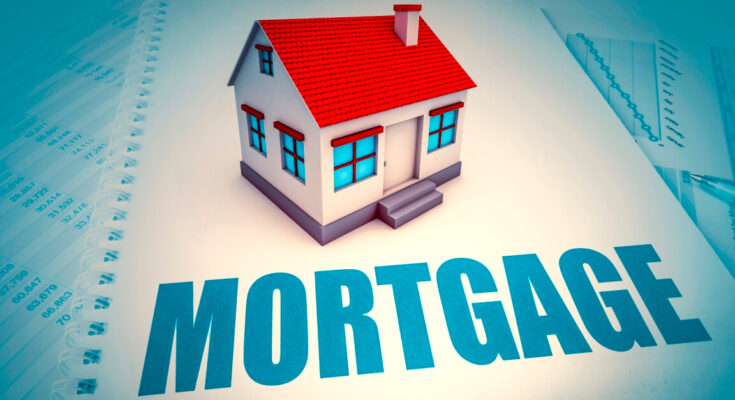Understanding Mortgages: A Guide to Home Financing
Purchasing a home is one of the most significant financial decisions a person can make. For most people, a mortgage is the only way to finance the purchase of a home, as it allows buyers to spread the cost of the property over many years. However, mortgages can be complex, with various types, terms, and conditions to consider. In this article, we will explore what a mortgage is, the different types of mortgages available, how to apply for one, and tips for managing your mortgage effectively.
What Is a Mortgage?
A mortgage is a loan used to purchase real estate, typically a home. When you take out a mortgage, a lender (such as a bank or credit union) provides you with the money to buy a home, and you agree to repay the loan in installments over a specified period, usually 15 to 30 years. In exchange for the loan, the lender holds a lien on the property. This means that if you fail to make your mortgage payments, the lender can take possession of the home through a legal process known as foreclosure.
Mortgages are typically repaid monthly, with a portion of the payment going toward the principal balance (the amount borrowed) and a portion going toward the interest on the loan. Over time, the share going toward the principal increases, while the interest portion decreases.
Types of Mortgages
There are several types of mortgages available, each designed to meet different needs. Understanding the different types of mortgages can help you choose the best option for your financial situation.
1. Fixed-Rate Mortgages
A fixed-rate mortgage is one of the most common types of mortgages. With this loan, the interest rate remains the same for the entire term of the loan. This means that your monthly payments will remain consistent over the life of the loan, making it easier to budget and plan for future payments.
- Advantages: Predictable monthly payments, long-term stability, protection against rising interest rates.
- Common Terms: 15-year and 30-year terms are the most common, but other terms may be available.
- Ideal for: Homebuyers who prefer stability and long-term planning.
2. Adjustable-Rate Mortgages (ARM)
An adjustable-rate mortgage has an interest rate that changes periodically, usually in response to fluctuations in the market or a specific index rate. ARMs typically offer a lower initial interest rate compared to fixed-rate mortgages, but the rate can increase over time.
- Advantages: Lower initial interest rates, which can result in lower initial monthly payments.
- Risks: Payments may increase significantly after the initial fixed-rate period, leading to higher monthly payments.
- Ideal for: Borrowers who plan to sell or refinance before the interest rate adjusts, or those who are comfortable with the possibility of increasing payments in the future.
3. FHA Loans (Federal Housing Administration)
FHA loans are government-backed loans that are designed to help first-time homebuyers and those with less-than-perfect credit. These loans typically require a lower down payment and have more flexible qualification requirements than conventional loans.
- Advantages: Low down payment requirements (as low as 3.5%), more lenient credit score requirements, easier to qualify for.
- Disadvantages: Mortgage insurance premiums are required, which increases the overall cost of the loan.
- Ideal for: First-time homebuyers and those with a smaller down payment or less-than-ideal credit.
4. VA Loans (Veterans Affairs)
VA loans are a type of mortgage available to active-duty service members, veterans, and eligible surviving spouses. These loans are backed by the U.S. Department of Veterans Affairs and typically do not require a down payment or private mortgage insurance (PMI).
- Advantages: No down payment, no PMI, competitive interest rates, and more flexible credit requirements.
- Ideal for: Active-duty military members, veterans, and eligible surviving spouses who meet the eligibility requirements.
5. Conventional Loans
Conventional loans are not insured or guaranteed by the government, making them different from FHA, VA, or USDA loans. These loans typically require higher credit scores and larger down payments, but they offer greater flexibility in terms of loan amount and property types.
- Advantages: No mortgage insurance if the down payment is 20% or more, more flexibility in loan terms, and fewer government restrictions.
- Disadvantages: Higher credit score and down payment requirements.
- Ideal for: Borrowers with good credit who can afford a larger down payment and want more flexibility in their loan options.
6. USDA Loans (United States Department of Agriculture)
USDA loans are government-backed loans designed to help low- to moderate-income borrowers purchase homes in rural and suburban areas. These loans offer 100% financing, meaning no down payment is required.
- Advantages: No down payment required, low-interest rates, and lower mortgage insurance costs.
- Ideal for: Low- to moderate-income homebuyers who are purchasing in qualifying rural or suburban areas.
How to Apply for a Mortgage
Applying for a mortgage can be a complicated process, but understanding the steps can help you navigate it more effectively. Here’s a general overview of the steps involved in applying for a mortgage:
- Check Your Credit Score: Your credit score is one of the most important factors that lenders consider when approving your mortgage application. Check your credit score and address any issues before applying for a loan.
- Determine How Much You Can Afford: Use mortgage calculators to estimate how much you can afford to borrow based on your income, debts, and other expenses. Lenders typically recommend that your monthly mortgage payment not exceed 28-30% of your gross monthly income.
- Gather Your Documents: Lenders will require documentation such as proof of income, tax returns, bank statements, and employment history. Be prepared to provide these documents when applying for a mortgage.
- Get Pre-Approved: Before you start shopping for a home, consider getting pre-approved for a mortgage. This involves submitting your financial information to a lender, who will evaluate your ability to repay the loan and provide a pre-approval letter stating the loan amount you qualify for.
- Shop for the Best Mortgage: Compare loan offers from different lenders to find the best mortgage rate and terms. Be sure to consider the interest rate, loan term, fees, and other costs associated with each loan.
- Submit Your Application: Once you’ve found the right mortgage, submit your application along with the required documentation. The lender will review your application, and if approved, they will issue a loan offer.
- Close the Deal: Once your loan is approved, you’ll proceed to the closing process, where you’ll sign the necessary paperwork, pay any closing costs, and finalize the sale of the property.
Tips for Managing Your Mortgage
- Make Payments on Time: Timely mortgage payments are crucial for maintaining your credit score and avoiding late fees. Set up automatic payments or reminders to ensure you never miss a payment.
- Consider Refinancing: If interest rates drop or your financial situation improves, refinancing your mortgage can help lower your monthly payments or shorten your loan term.
- Pay Extra Toward the Principal: If possible, make extra payments toward your loan’s principal to reduce the overall interest you pay over time and pay off the loan faster.
- Avoid Borrowing More Than You Need: While it may be tempting to borrow as much as you can, it’s important to borrow only what you need to avoid taking on unnecessary debt.
- Review Your Mortgage Regularly: As your financial situation changes, it’s a good idea to review your mortgage and see if adjustments can be made to better align with your current needs.
Conclusion
A mortgage is a powerful tool that enables individuals to purchase a home, but it comes with significant responsibilities. Understanding the different types of mortgages available, the application process, and how to manage your loan effectively can help ensure that you make an informed decision. Whether you’re a first-time homebuyer or looking to refinance, a mortgage can provide you with the financing needed to achieve your homeownership goals.



